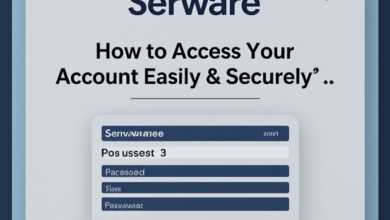Keep It Burnin The Future of BPM and Key

Keep it burnin, future BPM and key! This phrase is all about making music that moves us. When we talk about BPM, we mean beats per minute. This is how we measure the speed of music. A higher BPM means a faster song that makes you want to dance! The key in music helps us understand how the notes sound together. Together, BPM and key create amazing tunes that we love to listen to.
In the future, keep it burnin means using technology to make music even better. New tools and apps help musicians create cool beats and melodies. We can expect to hear exciting music that makes us feel happy and energetic. Let’s explore how BPM and key will shape the music of tomorrow.
What is BPM and Why Does It Matter
BPM stands for beats per minute. It tells us how fast a song is. Every song has a certain BPM that makes it unique. For example, a song with a low BPM feels slow and calm. On the other hand, a high BPM makes you want to dance and move! Understanding BPM is very important for musicians and music lovers.
Many people enjoy different types of music because of their BPM. Some like fast music to dance to, while others prefer slower tunes to relax. Knowing the BPM helps us choose the right song for our mood. If you want to have fun at a party, you might want a song with a high BPM. This helps everyone get excited and happy.
Musicians use BPM to create their songs. They decide if they want their music to be slow or fast. When creating a song, it’s important to think about the right BPM. It can change how people feel when they listen to it. So, remember that BPM is a big part of music that makes us feel different emotions.
Understanding Musical Keys: The Basics
A musical key helps us know which notes sound good together. Every song has a key that guides the music. It’s like a map for musicians! When musicians play in the same key, their music sounds nice and connected. This is why understanding musical keys is important for creating great music.
Every key has a special feeling. Some keys sound happy, while others can sound sad. For example, the key of C major feels bright and cheerful. In contrast, the key of A minor sounds more serious and deep. Musicians choose keys based on the feelings they want to express in their songs.
Learning about keys is fun and exciting. You can play around with different keys to see which ones you like best. Playing in various keys can also help you write new songs. So, understanding musical keys helps musicians create music that people love to hear.
How BPM Affects Our Dancing
When the music plays, our bodies want to move! The BPM of a song can change how we dance. Fast music with a high BPM makes us want to jump and twirl. It gets our hearts racing and our feet tapping. This is why DJs play fast songs at parties and clubs.
Slow music, with a lower BPM, can make us sway and relax. When we hear these tunes, we might want to sit and enjoy the moment. This music is perfect for quiet times, like when we’re hanging out with friends or family. It helps create a calm atmosphere.
BPM also helps dancers choose their moves. Dancers practice different steps for different tempos. Some steps are great for fast music, while others fit better with slow songs. So, the next time you hear music, pay attention to the BPM and how it makes you want to dance!
The Future of Music Production Technology
The future of music is bright with new technology! Many tools are helping musicians create amazing sounds. Music software allows artists to experiment with different BPMs and keys easily. They can change the speed of their music with just a click. This makes it easier to find the right beat for their songs.
Technology also helps in mixing and mastering music. This means taking different sounds and blending them together. With advanced tools, musicians can produce high-quality tracks right from their homes. They don’t need fancy studios anymore, making it more accessible for everyone.
We can expect exciting changes in how we create music. New apps and devices are constantly being developed. These tools will help musicians explore their creativity in ways we never thought possible. So, keep an eye on the future of music production—it’s going to be fantastic!
Keep It Burnin: Famous Songs with High BPM
Many popular songs have a high BPM that makes us want to dance. These songs often play at parties and celebrations. Songs like “Uptown Funk” or “Shake It Off” are great examples of music that keeps the energy high. They have catchy beats that make everyone move!
High BPM songs are also great for workouts. People listen to this type of music to stay motivated while exercising. The fast beats help keep their energy up. Whether you are running, dancing, or just having fun, high BPM songs can make everything more exciting.
Musicians often aim for a high BPM when they want to create fun music. They know that a lively beat can get people on their feet. This is why many dance tracks focus on keeping the BPM high. It creates a joyful atmosphere that brings everyone together!
How to Choose the Right Key for Your Song
Choosing the right key for your song is important. Each key has its own character and emotion. For example, if you want a happy sound, you might choose a major key. If you want something more serious, a minor key could be the best choice. It helps set the mood for your music.
Musicians often play around with different keys before finalizing their songs. They may start with one key and then try others to see how it feels. This process can lead to surprising and beautiful music. Sometimes, changing the key can give a song a whole new life!
When writing songs, remember to consider your audience. What feelings do you want to share? Think about the message of your song and how the key can help express it. This way, you can create music that truly connects with people.
Exploring Different BPM Ranges for Music
BPM ranges help us understand different styles of music. For example, a slow song usually has a BPM between 60 and 80. This music is perfect for relaxing or romantic moments. On the other hand, fast songs can have a BPM of 120 or higher, making them ideal for dance floors.
When exploring BPM ranges, you can find music that suits your taste. Some people enjoy upbeat tracks for workouts, while others may prefer slower tunes for quiet evenings. Each BPM range has something special to offer. It helps you create playlists for every mood!
Musicians often experiment with various BPMs to find what works best for their songs. They might start with one speed and then adjust it based on how they feel. This flexibility allows them to craft unique and memorable music that resonates with listeners.
The Connection Between BPM and Genre
Different music genres have their own typical BPM ranges. For example, pop music often has a BPM between 100 and 130. This makes it catchy and easy to dance to. In contrast, slower genres like ballads usually have a BPM under 80. These songs focus more on the lyrics and emotions.
Understanding the connection between BPM and genre can help you discover new music. If you love a certain genre, knowing its typical BPM can lead you to similar songs. You might find new artists or styles that you enjoy!
Musicians often take inspiration from different genres. They may mix elements from various styles to create something fresh. By playing with BPM and genre, artists can push the boundaries of music and create exciting new sounds. This blending helps keep music vibrant and interesting.
Tips for Musicians: Using BPM and Key Effectively
Musicians can enhance their songs by using BPM and key effectively. One important tip is to experiment with different combinations. Try changing the BPM to see how it affects your music. You might discover a new groove that fits perfectly!
Another tip is to understand your audience. What kind of music do they enjoy? By considering their preferences, you can choose the right key and BPM for your songs. This connection can make your music more relatable and enjoyable for listeners.
Practice is key to mastering BPM and key choices. The more you play and experiment, the better you will understand how these elements work together. Don’t be afraid to try new things and step outside your comfort zone. This way, you can create unique and memorable music!
The Role of BPM and Key in Music Festivals
Music festivals are exciting places where people come together to enjoy live performances. BPM and key play a big role in creating the festival atmosphere. Fast BPM songs keep the energy high and make everyone want to dance. This excitement is what makes festivals so special.
Artists often plan their sets based on the crowd’s energy. They might start with slower songs and gradually increase the BPM to get everyone moving. This helps build excitement and keeps the audience engaged. It’s all about creating a memorable experience for festival-goers.
Understanding BPM and key can help festival organizers create diverse lineups. By including different genres and tempos, they can cater to various tastes. This variety makes festivals fun and allows everyone to find something they enjoy. It’s all about celebrating music together!
Conclusion
In conclusion, understanding BPM and key is super important for music lovers and musicians. These two elements help shape how music sounds and makes us feel. When we know about BPM, we can pick the right songs for dancing or relaxing. The key helps us understand the emotions in music, making each song unique.
As we look to the future, we can expect even more exciting music that keeps it burnin! With new technology, musicians will create amazing sounds that we can all enjoy. So, let’s keep listening and dancing to the music that moves us. Remember, every beat and note matters in the world of music.




